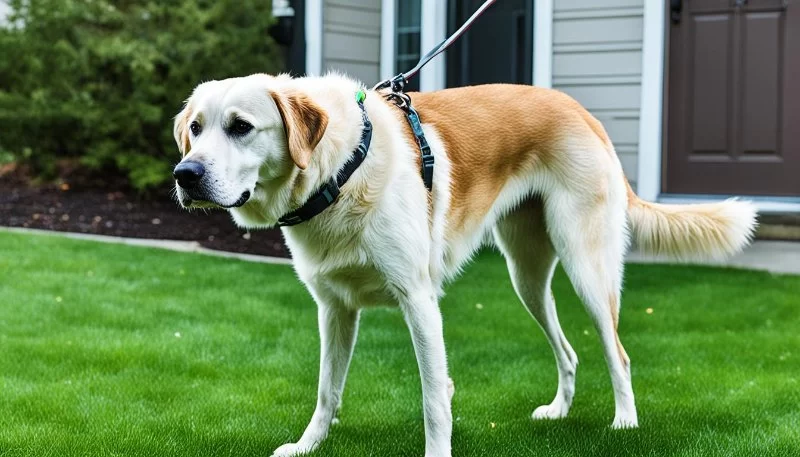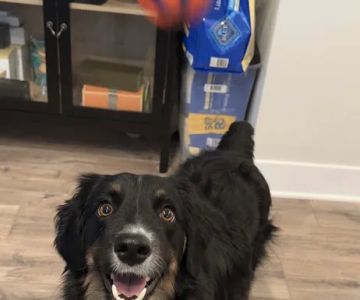Training a Senior Dog: Is It Too Late? Expert Tips You Shouldn't Ignore
1. Why Training a Senior Dog Is Possible and Important
Many pet owners believe that training a senior dog is too late, but this is a common misconception. While training a senior dog may come with its own challenges, it’s never too late to teach your dog new tricks or improve their behavior. Just like with puppies, senior dogs are capable of learning, adapting, and bonding with their owners through training. In fact, training a senior dog can even be beneficial for their mental and physical health.
2. Benefits of Training Your Senior Dog
Training your senior dog provides more than just behavioral improvements. Here are some key benefits:
2.1 Strengthening the Bond
Training provides an opportunity to build a stronger bond with your dog. Senior dogs, even those who may have spent years without much training, can still benefit from positive interaction with their owners. This strengthens trust and communication between you and your dog.
2.2 Mental Stimulation
Just like humans, dogs need mental stimulation to stay sharp. Training exercises keep your senior dog's mind active, which can help prevent cognitive decline. It can also alleviate boredom, which is especially important for dogs who are less active than younger ones.
2.3 Physical Benefits
Training doesn’t just stimulate your dog’s brain – it’s also an excellent form of physical exercise. Gentle movements like sit, stay, or even walking through an obstacle course can help keep their muscles engaged, improving mobility and flexibility.
3. When to Start Training Your Senior Dog
While it's never too late to begin training, there are some factors to consider when training a senior dog:
3.1 Health Considerations
Before starting a training regimen, it's important to consult with your veterinarian. Senior dogs may have certain physical limitations, such as arthritis or other joint issues, that could affect their ability to perform specific commands. Your vet can guide you on the best types of training that are safe and beneficial for your dog’s health condition.
3.2 Slow and Steady
When training senior dogs, remember that patience is key. Senior dogs may not respond as quickly as younger ones, but that doesn't mean they aren’t capable. Break down commands into small, manageable steps and take breaks as needed. Keep training sessions short (around 5-10 minutes) to prevent fatigue.
4. Effective Training Tips for Senior Dogs
Training a senior dog involves some special considerations, but with the right approach, it can be an enjoyable experience for both you and your dog. Here are some expert tips:
4.1 Use Positive Reinforcement
Positive reinforcement is essential for any dog, but especially for senior dogs. Use treats, praise, and affection to reward good behavior. This helps to keep your dog motivated and builds a positive association with learning.
4.2 Focus on Simplicity
Older dogs may not have the same energy or concentration as younger ones, so it's important to keep training commands simple and consistent. Start with basic commands like "sit," "stay," and "come." Once they master those, you can slowly introduce more advanced commands.
4.3 Respect Their Limits
It’s crucial to respect your dog’s physical and mental limitations. If your dog is showing signs of fatigue, stop and let them rest. This will prevent frustration and injury. Work within their abilities, and gradually build up the intensity of the training over time.
4.4 Incorporate Fun Activities
Training doesn’t have to be all work! Incorporate fun activities like scent games, hide-and-seek, or interactive toys. These activities stimulate your dog’s mind and can help improve their overall mood, making training sessions more enjoyable.
5. What to Do if Your Senior Dog Shows Signs of Behavioral Issues
As dogs age, they may develop new behavioral issues. It’s not uncommon for senior dogs to experience anxiety, confusion, or other behavioral challenges. Here’s what to do:
5.1 Identify the Root Cause
If your senior dog exhibits new or concerning behaviors, try to determine if there’s an underlying medical issue. Pain, cognitive decline, or even changes in vision or hearing can contribute to behavior changes. Visit your veterinarian to rule out any health problems.
5.2 Create a Routine
Senior dogs thrive on routine. Keeping a regular schedule for meals, walks, and training sessions can provide a sense of security and help alleviate anxiety. A consistent routine also makes training easier and more predictable for your dog.
6. Conclusion: It’s Never Too Late to Train Your Senior Dog
Training a senior dog may require patience and adaptability, but it's never too late to start. With the right approach, you can teach your dog new skills, keep their mind sharp, and improve their overall quality of life. Whether you’re teaching simple commands or addressing behavioral issues, remember that positive reinforcement and consistency are key. If you need help, don’t hesitate to consult a professional trainer or your veterinarian for guidance.
For more expert advice and support on training your senior dog, visit Hidden Brook Veterinary to find the best products and services for your pet’s health and training needs.












